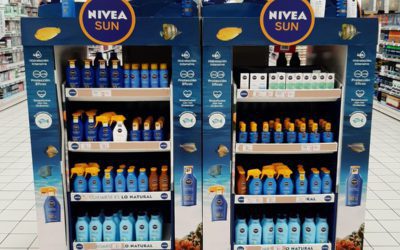In the beginning, when there was nothing; no language, people communicated. They took the materials they had and painted on the walls because they felt the need to tell others what they were doing. So, today, we can understand how the hunters went out hunting to feed the whole tribe, and how by means of weapons made of stones and sticks, they brought down the bison and ate for days.
Everything has an origin, and perhaps the storytelling started with the first painting on the wall. What we are sure of is that human beings want to tell stories. It wants to share, to teach, to move and to narrate. It has been like that for years. And just as we were gripped to know what those first men wanted to tell us, brands get consumers to be attentive to their stories to know the message.

What is storytelling
Storytelling, that word that makes us agencies puff out our chests. But what exactly is it. In today’s post we are going to follow up on the meaning and importance of this technique. Especially in 360 campaigns, where absolutely everything has a connection.
Storytelling is nothing more than being able to narrate events in an engaging way with a common thread. In this way, brands use storytelling to engage their audience by creating stories. Whether in a campaign or in a single spot, it can be connected so that all communications follow a story.
But before we get too fast, let’s look back. Where and when did storytelling emerge as a technique?
Actually, human beings have always been able to tell stories. It is the moment when brands manage to launch their message to their target audience in such a way that they empathize with it, get excited and feel attached to the brand whenstorytelling becomes an art and a technique in marketing.
Definitely, storytelling becomes a strategy that brands use to achieve consumer loyalty and impact their audience.
The advantages of storytelling.
loyalty as the most important. By means of a driving message in all the actions of a campaign, which are in tune with the image and history of the brand, the consumer maintains a positive memory of the brand.
If the brand manages to be memorable, it manages to position itself in the mind of the consumer and the competition as a reference and close brand. Therefore, it also gains in reputation.
In addition, creating a storytelling strategy can help to humanize a brand, especially after a crisis or bad press. When a brand is rebranding, it must consider a narrative thread in line with its new values or its new image.
However, in order to take advantage of these benefits, we need to take several things into account:
- Have a clear and concise message. If we are clear about what we want to communicate, it is easier to create a story around the idea. When a brand is rebranding, it must consider a narrative thread according to its new values or its new image.
- Who do we want to reach and how? Knowing who our audience is and where it is located is essential to direct our message directly to that medium.
- Knowing who our audience is and where it is located is essential to direct our message directly to that medium. Creativity in our pieces is all well and good, but if there is no coherence between them, the message will not be understood.
- The story is told with eyes, mouth and hands. In this digital era it is important to take into account all media. Visual, cinematographic, sound, written pieces… Find what best suits your message and bring it to life.

And what does it have to do with 360 Marketing?
The answer is everything. A 360 campaign needs a narrative thread that takes you from piece to piece in order to understand the whole message without losing the essence. This is how you achieve an experience through storytelling, and a well-constructed brand image.
Both on and off line actions have to be related to each other so that the message has a direct impact. Most importantly, it must make sense in the consumer’s mind.
The pieces must be understood individually because the public cannot count on the whole context or only have a presence in one of the media, so each piece has its own important weight. But the whole must have coherence for the message to be fully understood.
The story that our brand tells must be global. It must be transmedia and cross the borders of different formats.
Likewise, when we create a 360 campaign, we must think about storytelling in order to connect all the actions of our brand through a storyline.
Having storytelling in your strategy can be the difference that makes your users connect emotionally with you and not with your competition. It can be the key to increase your sales due to loyalty and gain brand reputation.
At Grupo WDiwe have been painting on the wall for 10 years to tell stories, but we are not going to tell you ours, we want you to tell us your brand’s story. There’s no better time than now for a little storytelling (don’t worry, we promise there are no bison in this one).





